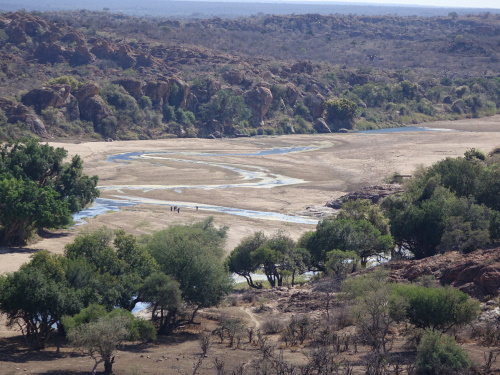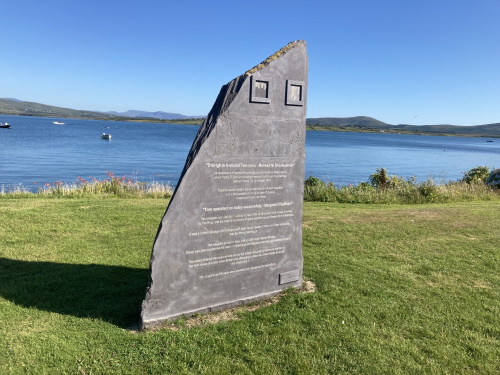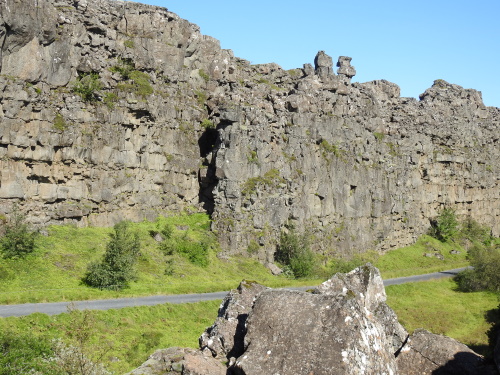Blog Connections
Transnational WHS in the making
The number of transnational WHS – WHS spread over more than 1 country - has risen sharply over the past years, with no less than 4 of them added last year. Currently, there are 43, split between transboundary (contiguous ones: 21) and serial transnational (non-contiguous: 22). Some are even spanning multiple continents such as the Works of Le Corbusier. Can we expect more of them? Which transnational initiatives do we see on the T Lists?

A loophole?
ICOMOS calls it "the essence of the spirit of the World Heritage Convention: the principle of the universal value of heritage for humankind and the role of transnational cooperation". A transnational nomination definitely is more complex than a single country one: evaluations from the Beech Forests nomination for example, as shared in this video, show that it takes more time to prepare and requires long-term political support as there has to be a permanent conservation system in place across the locations.
Still, this becoming a popular path cannot be seen independent of the limit of 1 nomination per year per country, which came into effect in 2019. This limit only applies to the country that leads a transnational nomination, the others get a free pass. European countries (Germany, UK, Italy, France) are very active in transnational collaborations, leading for example to no less than 5 new inscriptions for Germany in 2021. In my opinion, this practice should be stopped and the limit of 1 also be applied to the supporting states.
Piggybacking
The following ones are aiming to extend a current WHS to a transnational one:
- Hyrcan Forests: Azerbaijan hopes to join Iran’s WHS in 2023
- Koutammakou: Benin aims to join Togo at the next WHC session.
- Moravian Church Settlements: to be added to Denmark’s Christiansfeld in 2024, sites from UK, USA, Germany.
- Complex of travertine waterfalls in Martin Brod - Una National Park: we recently found out that this might be a proposed extension to Croatia’s Plitvice Lakes.
- Mapungubwe Cultural Landscape: Botswana hopes to join South Africa. Actually, 3 countries connect here (see the first photo), including Zimbabwe.
- Mount Nimba Strict Reserve: Liberia looking to join Côte d'Ivoire and Guinea.
- Routes of Santiago de Compostela: Routes in Portugal: Portugal looks to join the Spanish Routes.
There are even more possibilities: in the connection Potential Transboundary Sites we have also included adjacent sites in neighbouring countries with potential for a transnational extension but without concrete plans.

Current initiatives
From the new potential WHS below, we know that these are active:
- Paper Mills: Poland, Czechia, Germany (aiming for 2024)
- Silk Roads: Zarafshan-Karakum Corridor: Tajikistan, Turkmenistan, and Uzbekistan were ready for the 2022 WHC
- Cold winter deserts of Turan: Kazakhstan, Uzbekistan, Turkmenistan. Expected in 2023.
- Royal Sites of Ireland (new Irish T List): Ireland + UK (Northern Ireland)
- Valentia Transatlantic Cable Station and Hearts Content Cable Station (new Irish T List): Ireland + Canada
- Workers Assembly Halls: in preparation by Denmark, with sites from Australia, Finland, the UK, and Belgium reportedly joining the initiative
And these ones were added recently to their countries' respective T Lists, so we can assume activity here as well:
- Les témoignages matériels de la construction de l’État des Pyrénées : la Co-principauté d’Andorre : Andorra, France and Spain
- The Hajj Pilgrimage Routes: The Darb Zubaydah: Iraq + Saudi Arabia.

Possible other ones, with unknown status
I crawled through the full set of Tentative Lists, and noted down the following ones which at least at some time were meant to be proposed as transnational sites. Their current status is unsure.
- Augustow Canal: Poland + Belarus (with the relations between the two countries at the moment: very unlikely)
- Sites funéraires et mémoriels de la Première Guerre mondiale : Belgium + France (nominated in 2018, decision adjourned due to debate on conflict sites)
- Sacred Titicaca Lake: Peru + Bolivia (surprisingly never brought forward by either of the two countries, on their T Lists since 2005/2003 respectively)
- Cross River-Korup-Takamanda (CRIKOT) : Cameroon, Nigeria
- Paysage culturel du Lac Tchad: Chad, Cameroon, Nigeria (postponed in 2021 due to security issues)
- Les Alpes de la Méditerranée: Monaco, France, Italy (negative recommendation in 2019)
- Genoese Trade Routes: Ukraine + Turkey
- System of Fortifications at the Confluence of the Rivers Danube and Váh in Komárno - Komárom: Slovakia + Hungary (very old TWHS, rejected already in 2008)
- Viking Monuments and Sites: Iceland, Norway, Latvia, Denmark, Germany (deferred in 2019; Latvia went on its own last year with Grobina but deemed not good enough)
- Massif du Mont-Blanc: France, Italy
- Yapese Disk Money Regional Sites: Palau, Micronesia (incomplete dossier in 2010)
- Sites of Great Moravia: Slavonic Fortified Settlement at Mikulčice – Church of St. Margaret at Kopčany: Czechia + Slovakia (withdrawn in 2009 and 2014)
- Les Mausolées Royaux de Numidie : Algeria + Tunisia (the Algerian site may show up in the coming years, but no news of them working together)
Do you know of any further initiatives for future transnational sites?
Els - 16 October 2022
Comments
Nan 16 October 2022
@paul: bath doesn't really fit the spa sites due it's Roman heritage. I also feel Karlsbad is a vstrong inscription. It simply should have been the 3 Czech ones. Essentially, they carried it.
Jay T 16 October 2022
“In my opinion, this practice should be stopped and the limit of 1 also be applied to the supporting states.”
I agree with this sentiment, or at the very least ensuring that countries that whichever country in a serial nomination already has the most World Heritage Sites is required to be the lead country in the serial nomination. The gamesmanship by certain countries (I’m thinking of Germany and Italy in particular) using these nominations to increase their total number of sites is problematic.
Solivagant 16 October 2022
“…. The others get a free pass. European countries (Germany, UK, Italy, France) are very active in transnational collaborations,”
I don’t normally publicly “stick up for” UK – but this is unfair! There is no evidence at all that UK is, or ever has been “active” in playing the “transnational site game”! Yet e.g Belgium (which certainly does!) isn’t on this list!!! UK currently only has 2 such sites – Roman Limes where it already had Hadrian’s Wall and gained nothing, apart from adding that site’s OUV to boost the ever growing Limes list (We should look to UNESCO/ICOMOS and the “hanger on” countries as the “movers” there) and European Spas – again Bath was already inscribed and “provided” its OUV to the “greater good” of the extension without increasing the UK “inscribed sites” count! Now let me look at NL,…. I see it already has 3 Transnational sites (I think of those Colonies of Benevolence!) …. as do e.g Poland and Czechia…….Some might argue that “Europe” would be better regarded as a single entity like e.g China or India whose trans-provincial sites are hidden. But then, of course, it would only get 1 nomination per year!!!
And what about those in UK which are potentially upcoming. Again – I don’t see UK “active” in leading on any of them. The Royal Forts is clearly an Irish initiative and, to some extent reflects a nationalist narrative, The Workers Assembly Halls is Danish - and I would suggest that ICOMOS would criticize as “incomplete” any nomination which didn’t include the “Pitman’s Parliament” in Durham. As for Gracehill and its Moravian site – the evidence is clearly that UK added it to its T List because it was asked to do so from outside UK. This is not an example as e.g where Italy insisted on being included in the Rhaetian railway even though its few kms added no OUV whatsoever!
In the case of UK I would actually ask the question in the other way – why does it have so few Transnational sites?? Its history and geography are major factors – many Transnational sites reflect changes to frontiers which once saw them in the same states and modern boundaries which don’t follow “Natural” regions. The lack of “commonality” with European sites reflects UK’s relative “detatchment” in both respects. The fact that the strongest transnational historical link goes back to the Romans says something…!! But is it more than that? Could it also reflect an “emotional” detatchment. I think of e.g the current work on a transnational extension for Transporter Bridges – UK has 3 extant such “historic” bridges whilst Germany has 2 ... yet the initiative to extend is all coming from Germany and UK enthusiasm has varied between “lukewarm” and “non existent”. The same situation seems to apply to the Chelsea Physic Garden and a potential Linnaeus site being led by Sweden. I could give other examples – I would suggest that the reality is that UK as a whole does not seem to be that interested either in increasing its number of WHS, nor in initiating cooperation with European sites to do so!! Read into that what you will.